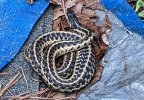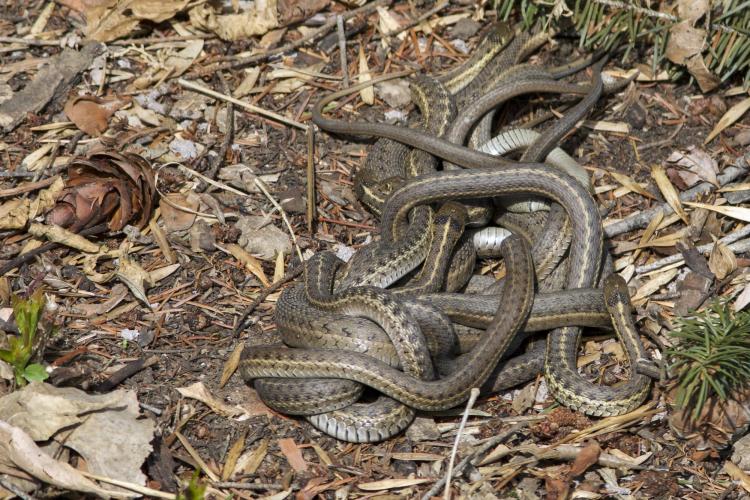- Joined
- Dec 21, 2013
- Messages
- 2,776
I was thinking about this because I can identify most of the snakes I see near my home, or when hiking, camping, kayaking, etc. My wife went out to cover up some plants, and encountered this snake (see attached photos) and rushed back into the house, thinking it might be venomous. I assured her it was not poisonous, tossed it gently out into the edge of the woods near our house using a stick, and came back inside.
My first glance thought was "water snake" or even "eastern ribbon snake", but I soon realized it is a common eastern garter snake. Those three snakes seem to have significantly different markings and coloration in the wild, compared to the "identification photos" one usually sees. Obviously it's too fat to be a ribbon snake, but my initial thoughts were based primarily on color, as I was staying back at distance until I was sure I had identified it correctly.
I would estimate it's length at about 26-30 inches - maybe even a little longer, as I never saw it fully extended.
Does anyone think it is something other than an eastern garter snake? I'm always open to discussion and learning.
Thanks!
My first glance thought was "water snake" or even "eastern ribbon snake", but I soon realized it is a common eastern garter snake. Those three snakes seem to have significantly different markings and coloration in the wild, compared to the "identification photos" one usually sees. Obviously it's too fat to be a ribbon snake, but my initial thoughts were based primarily on color, as I was staying back at distance until I was sure I had identified it correctly.
I would estimate it's length at about 26-30 inches - maybe even a little longer, as I never saw it fully extended.
Does anyone think it is something other than an eastern garter snake? I'm always open to discussion and learning.
Thanks!
Attachments
Last edited:



